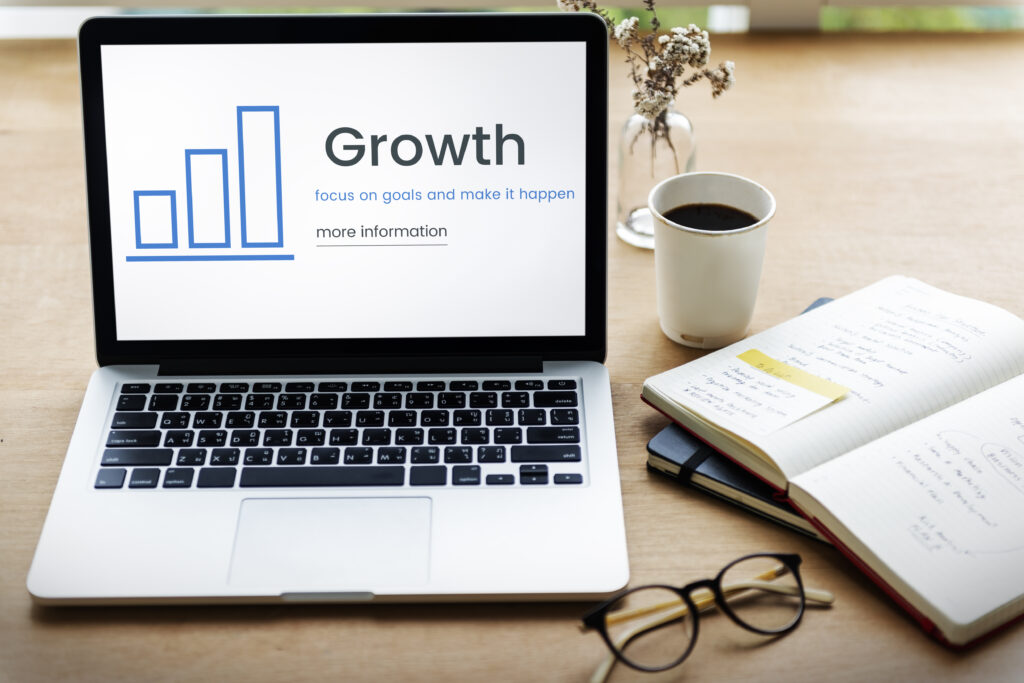In today’s competitive market, traditional marketing methods often fall short of driving long-term growth. Enter growth marketing—a strategy that focuses on every stage of the customer journey, using data and experimentation to achieve sustainable success. Unlike conventional marketing, growth marketing allows businesses to scale, improve brand perception, and make informed decisions that drive measurable results. In this blog, we’ll explore the key benefits of growth marketing and how adopting this approach can help your business unlock new levels of growth and revenue.

What is Growth Marketing?
Growth marketing is a dynamic, data-driven approach that focuses on continuous experimentation and optimization to drive sustainable business growth. Unlike traditional marketing, which often uses static, broad campaigns, growth marketing involves iterative testing, analysis, and adaptation to uncover the most effective strategies for engaging and retaining users. By leveraging data insights, growth marketers not only drive immediate results but also refine products and strategies to anticipate change and foster long-term success. It is a cycle of creating, marketing, analyzing, and enhancing to maximize impact in an ever-evolving landscape.
The Difference Between Growth Marketing and Traditional Marketing
The key difference between growth marketing and traditional marketing lies in their approach and focus. Here is a list of the main differences:
Focus:
- Traditional marketing focuses on top-of-the-funnel activities like lead generation and driving short-term wins.
- Growth marketing takes a holistic approach, considering the entire customer journey from acquisition to retention.
Approach:
- Traditional marketing aims for immediate results and often uses static, one-time campaigns.
- Growth marketing is iterative, using continuous testing, learning, and optimization of strategies.
Use of Data:
- Traditional marketing may rely on historical data and broad market trends.
- Growth marketing is heavily data-driven, leveraging real-time insights to refine campaigns and products.
Customer Engagement:
- Traditional marketing focuses on attracting new customers.
- Growth marketing not only acquires but also engages, retains, and converts customers into brand advocates.
Adaptability:
- Traditional marketing can be slow to adapt to changing market conditions.
- Growth marketing is flexible, evolving with customer behaviors and market dynamics through constant experimentation.
Growth Hacking vs Growth Marketing
Growth hacking and growth marketing are often confused, but they serve distinct purposes in driving growth. Growth hacking focuses on quick, tactical solutions, using unconventional methods to achieve rapid, short-term results. It’s characterized by creative experimentation, often leading to unpredictable streams of customer acquisition. In contrast, growth marketing takes a more strategic, data-driven approach. It emphasizes long-term growth through continuous optimization and informed decision-making, targeting sustainable and qualified demand. While growth hacking may generate quick wins, growth marketing aims for lasting impact by identifying the best-performing channels and refining strategies for ongoing success.

Key Growth Marketing Strategies
No matter your business, here are five essential growth marketing strategies:
- Customer Feedback:
Engage directly with customers through surveys, interviews, or social listening to uncover pain points and improve retention and word-of-mouth. - A/B Testing:
Run experiments comparing two options (A vs. B) to optimize engagement and refine marketing tactics. - Multi-Channel Marketing:
Prioritize channels using the RICE method, ensuring a consistent experience across all touchpoints, and integrate conversational marketing for personalized interactions. - Customer Lifecycle:
Analyze data at every stage of the customer journey to uncover growth opportunities and optimize user experiences. - Data-Driven Content:
Create and test content based on customer data to enhance lead generation, nurture efforts, and reduce acquisition costs.
Benefits of a growth marketing strategy
Here are the key benefits of a growth marketing strategy:
- Better Decision-Making:
Data-driven insights replace gut feelings, helping you understand what works and make informed decisions. - Enhanced Brand Perception:
By delivering personalized customer experiences, growth marketing strengthens relationships and enhances your brand reputation. - Scalability:
You can easily scale marketing efforts up or down based on cash flow, avoiding wasteful spending on large, ineffective campaigns. - Cross-Functional Collaboration:
Growth marketing unifies teams from marketing, product, sales, customer support, and analytics for a cohesive approach. - Achieve Revenue Goals:
It focuses on agile, data-backed goals to drive sustainable revenue growth and measurable results.
Final thought
Incorporating growth marketing can drive sustainable success and stronger customer relationships. But navigating data-driven strategies requires expertise. That’s where Markitiz comes in. We specialize in growth marketing solutions, from social media management to website design, helping businesses generate leads and achieve revenue goals. Ready to elevate your marketing?




